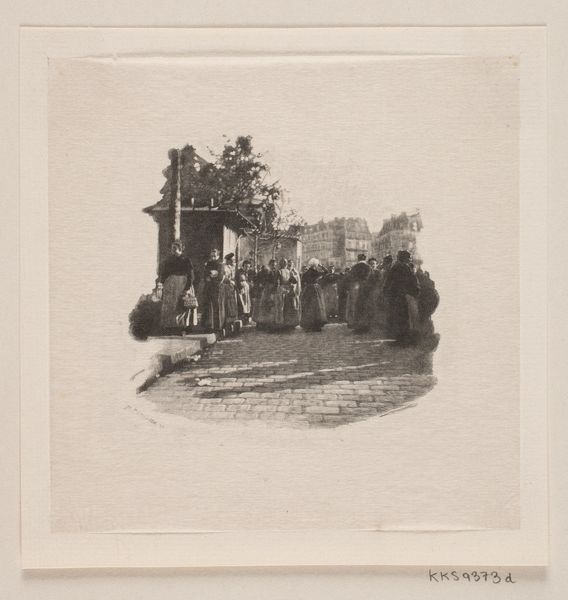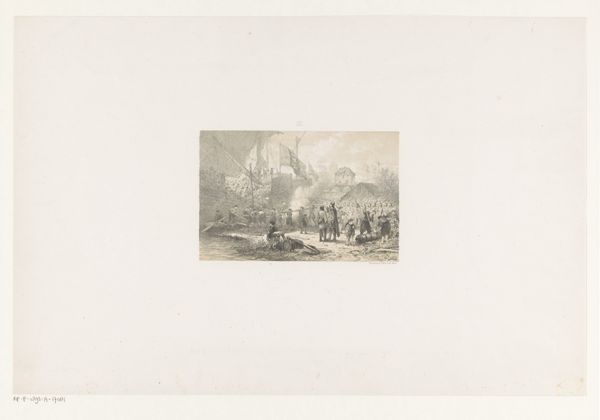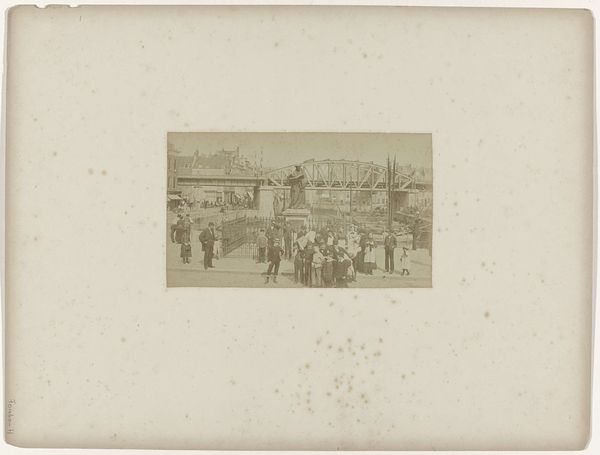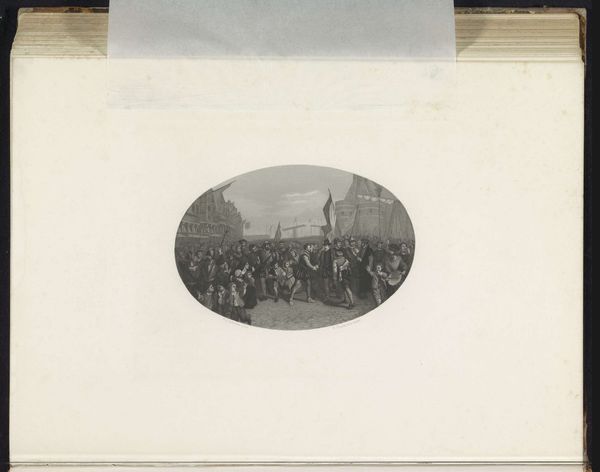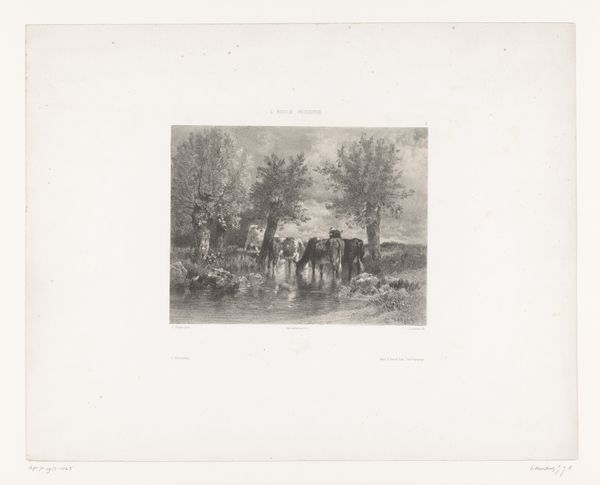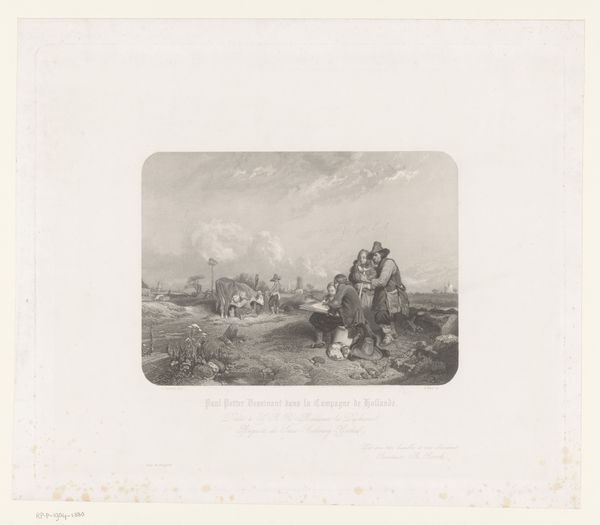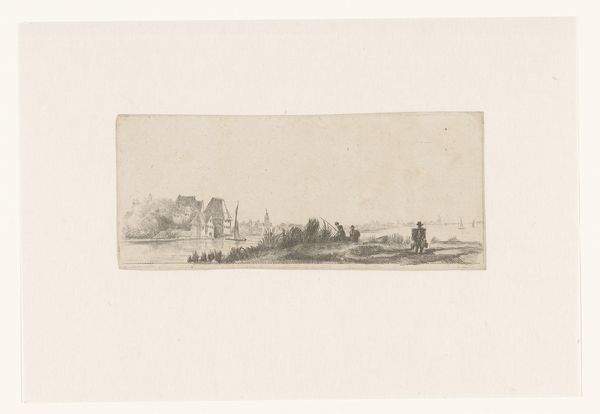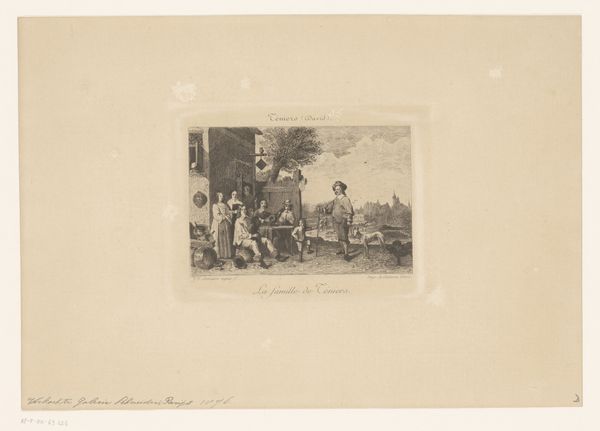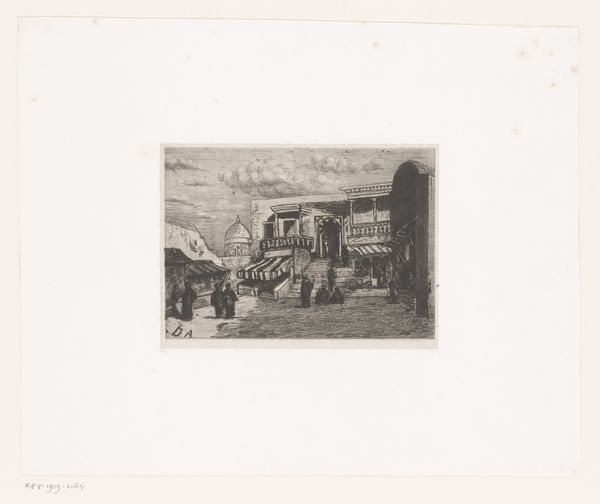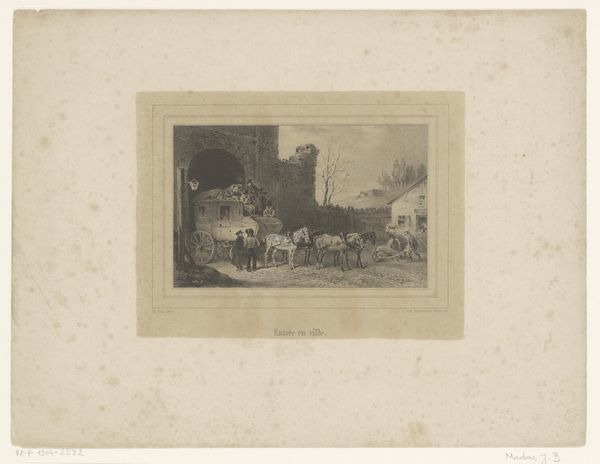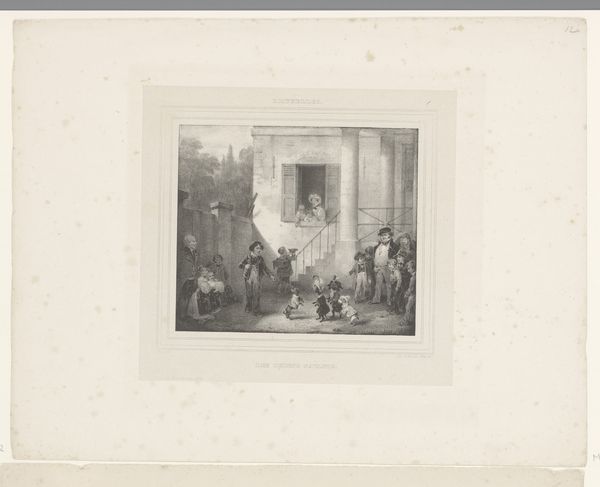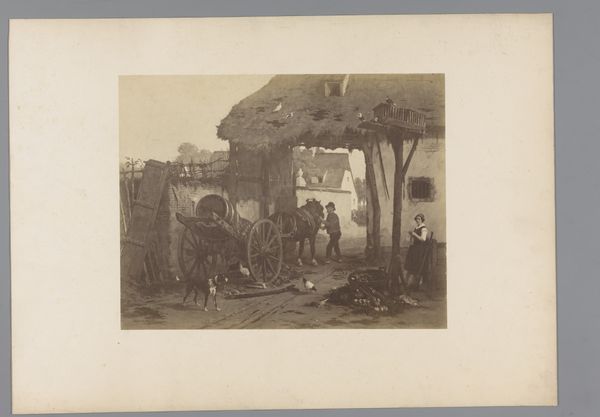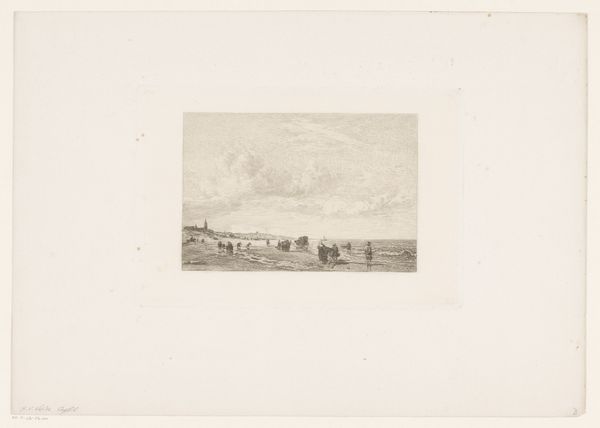
print, engraving
#
narrative-art
#
dutch-golden-age
# print
#
landscape
#
figuration
#
line
#
cityscape
#
history-painting
#
engraving
Dimensions: height 355 mm, width 540 mm
Copyright: Rijks Museum: Open Domain
Curator: What a wonderfully detailed print. This is Johan Conrad Greive’s “Gijsbrecht van Aemstel laat een dam in de Amstel aanleggen,” created in 1876. Editor: It’s… intricate, certainly. My first impression is of bustling activity, all rendered in a rather muted palette. There’s a lot to visually unpack in this landscape. Curator: Absolutely. Greive is illustrating a pivotal moment in Amsterdam’s history—Gijsbrecht van Aemstel ordering the construction of the dam on the Amstel River. It’s foundational, quite literally. Editor: And structurally fascinating. The linear precision of the engraving gives it a compelling clarity despite the chaos of the scene. The lines articulate everything from the waves to the textiles. Curator: What I find compelling is the public performance of civic duty on display here. Look at the figures, both observing and participating. This wasn't simply an engineering project; it was a demonstration of leadership, solidified for public consumption. Greive is participating in the city's historical narrative and also shaping contemporary views on the same events. Editor: Yet, technically, I'm drawn to how the line directs the viewer’s eye—from the foreground figures to the construction, eventually leading us to the architecture of the city itself. The interplay of light and shadow, though subtle, provides a distinct spatial depth. Curator: He emphasizes the relationship between the city's past and its present—its creation is not something isolated, it exists continuously, shaping its identity and destiny. Greive makes a political statement about Amsterdam’s resilience, innovation and even about Dutchness at a very particular period of state building. Editor: I see your point. The artistic choice is an alignment with this historical positioning, not only capturing a moment but also promoting its cultural value to Amsterdam's vision of itself. It certainly gives the viewer a lot to think about when looking closely. Curator: Indeed. It gives us so much food for thought, demonstrating how historical moments and their representations evolve and how a sense of place and collective identity takes shape. Editor: I agree completely; my experience of art like this always leads me to the fundamentals of form and technique— the aesthetic impact, I feel, enhances and elevates those social dimensions you identified.
Comments
No comments
Be the first to comment and join the conversation on the ultimate creative platform.
